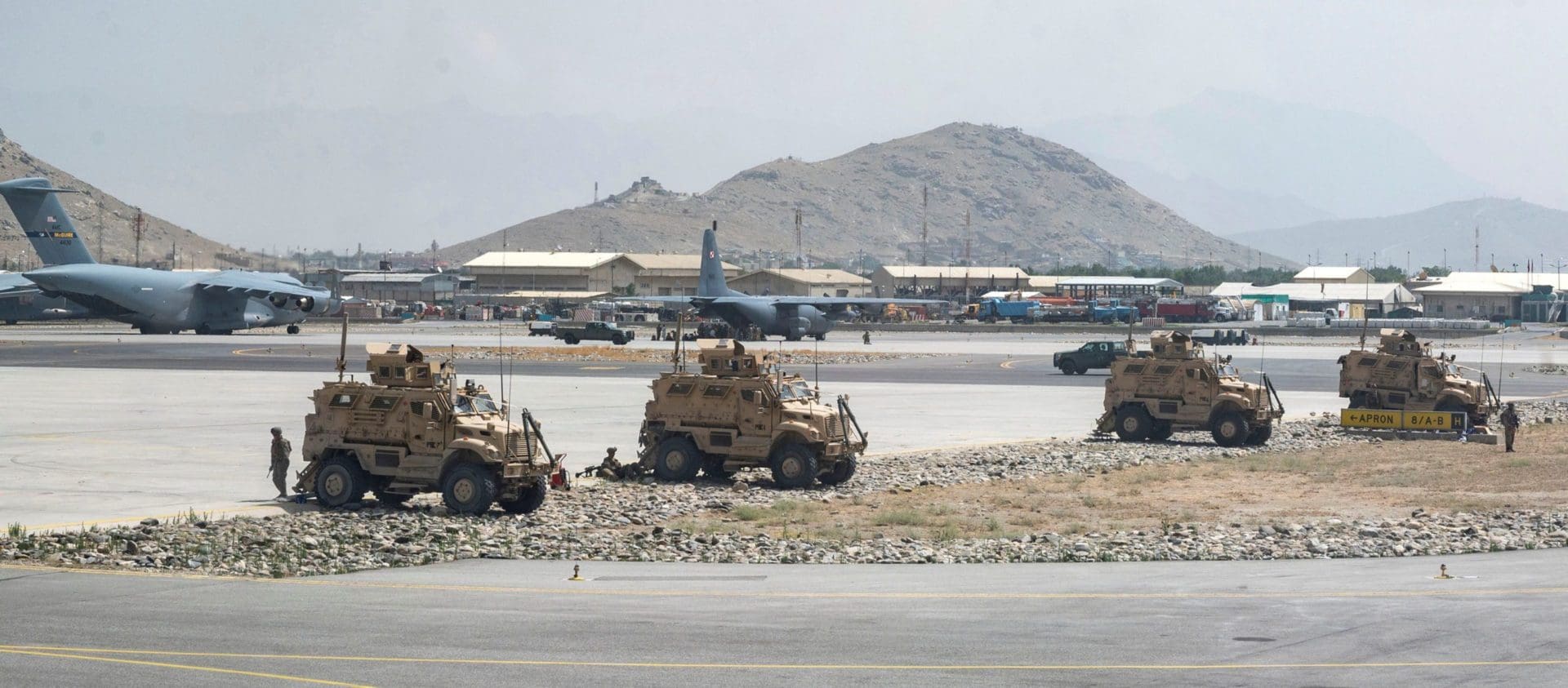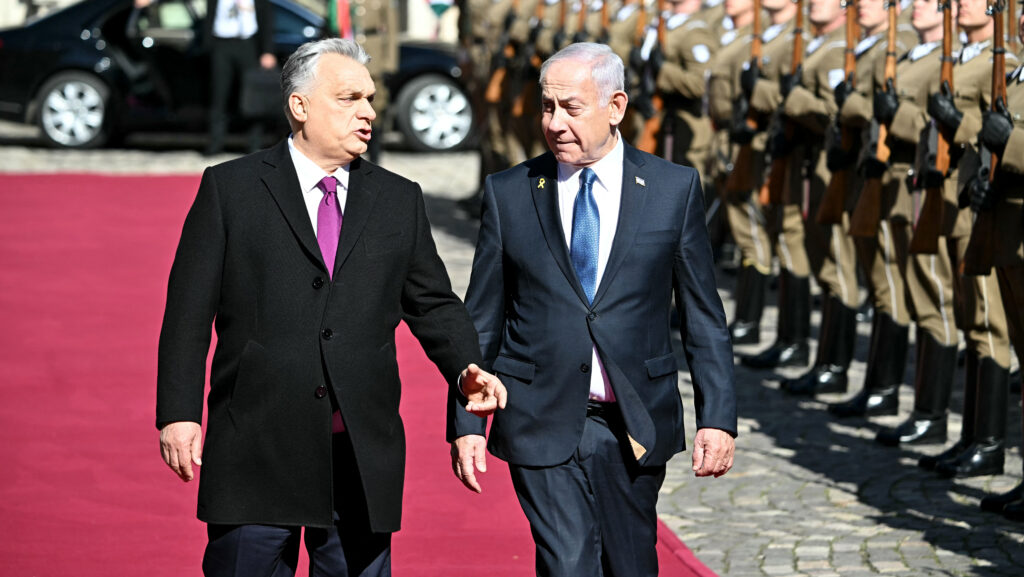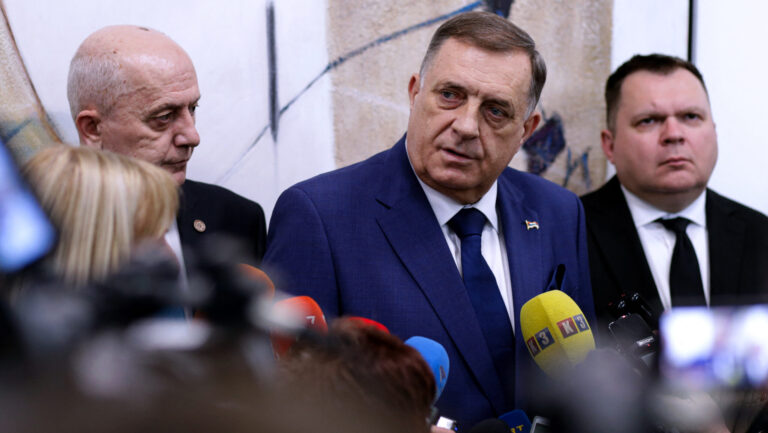After twenty years, the Taliban once more seized power in Afghanistan—two weeks prior to the completion of the withdrawal of international forces from the country. Although the Islamic fundamentalist group had been gradually gaining ground in the Central Asian country since the middle of the first decade of the century—and, therefore, were expected to take power sooner or later—the pace of their advance surprised both the international forces stationed in the country preparing their pull-out, and the international community. Two months after the takeover, international recognition of the new Taliban regime is still uncertain, and the rules and conditions of potential cooperation with it are unclear. Meanwhile, the country is on the brink of economic collapse and a humanitarian catastrophe, which makes it particularly important for the Taliban to establish international relations in order, first and foremost, to have access to aid. The international community is biding its time for the moment, but is closely monitoring developments in Afghanistan, focusing primarily on potential threats spilling over from the Central Asian country.
I. Timing of the pull-out
The president of the United States was strongly criticized for ordering the withdrawal from Afghanistan as well as for the manner of its execution.1 Wrapping up the war in Afghanistan was raised from time to time under administrations run either by Democrats or Republicans; first Barack Obama, then Donald Trump promised during their campaigns to put an end to war(s) overseas, and Joe Biden also vowed to finish ‘forever wars’.2 During Obama’s terms, the pull-out from Afghanistan was ultimately taken off the agenda, but in the second half of the 2010s, several actors in the conflict were already seeking a way out of the war. Following protracted negotiations, on 29 February 2020 Zalmay Khalilzad, Trump’s Special Representative for Afghanistan Reconciliation, signed a deal with the Taliban,3 which basically provided for the withdrawal of international forces from the country. The ‘peace agreement’ negotiated without the participation of the official Afghan government comprised three main provisions: the pull-out of foreign troops in two phases, security guarantees, and the commencement of intra-Afghan negotiations.4Although the last two points were set as conditions of withdrawal, in the end neither Trump nor the Biden administration linked the departure of the troops to their fulfilment. In April, the slowly progressing intra-Afghan dialogue was fully halted by President Biden’s announcement on the unconditional withdrawal of American troops.5 As the end-date of the pull-out was precisely specified, the Taliban achieved their goal; foreign troops were scheduled to leave the country by a set deadline.
The timing, in fact, would have never been ‘appropriate’ for the withdrawal. The 1 May 2021 deadline negotiated by the Trump administration, put off by the Biden administration to 11 September, and finally brought forward to 31 August, was far from ideal. The Ghani government, supported by international forces, was not stable at all, a fact of which the Americans were aware, but they nonetheless deemed it significantly stronger than it was in reality. Although a future collapse was a foregone conclusion, an intelligence assessment in June 2021 still estimated that the Afghan government would remain in power for six months.6 But in August, the Afghan state, which had been built up over the past twenty years, came crumbling down like a house of cards in a matter of days—the Taliban, after seizing the first provincial capital, took most of the country in just ten days.
It would have been possible to maintain the status quo for years to come with the international troops stationed in the country (about 10,000 personnel7), but a pull-out in five or ten years’ time would have been followed by the Taliban’s gaining ground anyway. The Taliban were not eliminated by the 2001 intervention, they were only pushed into the background temporarily. As early as 2006, the organization was already a serious problem for the international forces, as well as for the Afghan government, and from that point on it continuously increased its influence. The most telling maps of Afghanistan in recent years8 are the ones which show districts controlled by the Taliban or the government, as well as contested areas where the power struggle had not yet been decided. These maps demonstrate clearly the evolution of the situation: the Taliban were expanding their control from their ‘traditional’ territories (South and Southeast Afghanistan) towards the western, northern, and central provinces of the country.
II. Execution of the pull-out
The decision to withdraw from Afghanistan had broad political backing, and was supported by the American public
The decision to withdraw from Afghanistan had broad political backing, and was supported by the American public. Based on a survey by the Pew Research Center,9 the American adult population clearly expressed support for withdrawal (54 per cent said it was the right decision to make), but at the same time the main shortcomings of the operation were also highlighted by the respondents. Some 69 per cent stated that the United States had failed to achieve its overall objective in Afghanistan. The survey also made it clear that US public opinion was highly critical of the way the Biden administration handled the Afghan situation: only about one fourth of respondents (26 per cent) said that the administration did an excellent or a good job, while 29 per cent believed that it did a fair job, and 42 per cent said it did a poor job. The approval rating of the president changed significantly as a consequence of how the situation in Afghanistan was handled: not surprisingly, 77 per cent of Republicans rated the administration’s handling of the situation in Afghanistan as poor, but Democrats were also rather critical, with a narrow majority (55 per cent) saying that the administration had only done a fair (40 per cent) or poor (15 per cent) job.
The execution of the withdrawal was problematic in several respects, from a lack of communication between the allies through an absence of coordination with the Afghan side (for instance, the US evacuated Bagram, one of the largest military air bases, without notifying the Afghans in advance10) to the actual management of the evacuation. It was foreseeable that due to the growing strength of the Taliban the Afghans who had in any way supported the international forces or international organizations over the last twenty years would now have good reason to fear for their lives, and would try to leave the country if the Afghan state collapsed. Despite this fact, the United States failed to sort out the bureaucratic problems surrounding the special immigrant visa created for this purpose,11 and the rest of the states which participated in Afghanistan’s reconstruction did not prepare any scenarios for a potential Afghan refugee situation. For this reason, numerous offers of admission for Afghan refugees were made only during the evacuation, after the Taliban’s takeover.
III. Potential threats faced by the international community after the regime change in Afghanistan
Cooperative Government or Unpredictable Taliban?
Over the last twenty years, the international community worked together on rebuilding Afghanistan with a friendly and cooperative Afghan government which complied with international rules and standards. One of the main objectives of the new Taliban regime is to avoid the exclusion experienced in the 1990s, primarily in order to gain access to international aid, which made up close to 43 per cent of the Afghan economy in 2020.12 As the power of the Taliban has not yet been consolidated, it is of crucial importance for them to have access to frozen Afghan assets. They have engaged in talks with a number of countries and international organizations, but at those negotiations the Taliban were not recognized as the official leadership in Afghanistan. The ‘West’ keeps emphasizing that in order to gain recognition, the Taliban will have to resolve the situation of women, respect human rights, and maintain relative order in the country. The countries surrounding Afghanistan, however, are addressing the situation in a more pragmatic way. There is one commonality, however, in both approaches: they insist on linking recognition of the new leaders of Afghanistan to their maintenance of law and order in the country, and the severance of their ties with terrorist and extremist groups.
Supporting Terrorism
The biggest concern of the international community is that Afghanistan may once again become a hotbed of terrorism. In recent decades, the Taliban cooperated with numerous terrorist organizations, as well as extremist and separatist groups, providing training and helping to execute their operations. The best-known and most infamous example of this was their cooperation with Al-Qaeda, which dates back to the 1980s. With the war on terror and the liquidation of Osama bin Laden in 2011, Al-Qaeda currently does not represent the same level of threat as its ‘competitor’, the Islamic State, which was established in the meantime.
The Khorasani affiliate of ISIS first appeared on Afghan territory in 2015, as a competitor to the Taliban. Since the Taliban have not sworn allegiance to al-Baghdadi ISIS attacks have not only targeted Afghan minorities (Shiite communities, Hazaras), but also the Taliban. International forces also failed to eliminate the ISKP (Islamic State Khorasan Province) in the country. What is more, it is the Islamic State which has claimed responsibility for the bloodiest attacks of recent years, with the highest number of civilian casualties (see, for instance, most recently, the suicide bombing at Kabul airport claiming 170 lives on 26 August).13
In addition to Al-Qaeda, the Taliban provided a base for several regionally focused extremist organizations in the 1990s, and continued to maintain contact with them after 2001. Due to the presence in Afghanistan of groups primarily threatening Central and Southern Asia (e.g. the Islamic Movement of Uzbekistan, the Pakistani Taliban, and the East Turkestan Islamic Movement),14 the surrounding countries have contacted the Taliban, and one of the main topics of the negotiations was their demand that these groups be restrained and closely monitored. This is particularly true of the demand of the two superpowers in the region, China and Russia.
Refugees
In the new situation after the withdrawal, the number of Afghan refugees will depend to a large extent on the set-up of the new Taliban regime, international recognition of the Emirate, and the development of the security situation and the economy.
Afghanistan is already facing a major internal refugee crisis. According to a report by the International Organization for Migration (IOM), there are 5.5 million internally displaced people in the country (from January to September this year, 664,000 persons were forced to leave their homes).15 UNHCR reported that there are 2.6 million registered Afghan refugees worldwide, of which 2.2 million have settled in Pakistan.16 The repeated re-emergence of the refugee problem is a consequence of the conflict that has been ongoing for more than forty years, representing a security risk and an economic burden, particularly for neighbouring countries. Refugees are accumulating, mostly along the Afghan–Pakistani and Afghan– Iranian borders, because most of them plan to return to their homeland once the security situation improves. Over the past two decades, the Pakistani and Iranian authorities have on several occasions resorted to the deportation of masses of Afghan refugees, many of whom had never been to Afghanistan before, since their parents had fled the country at the time of either the Soviet–Afghan War or during the first period of Taliban rule. On returning to their country, some of them realized that their houses and lands had been confiscated, and, lacking roots, a place to live, or the means to make a living, many of them increased the number of internal refugees, adding yet another source of conflict to the already precarious internal situation.
The countries surrounding Afghanistan almost immediately closed their borders in response to the Taliban takeover
Since the Taliban takeover, cross-border movement has been moderate, thanks in part to the (partially) closed borders and airports, but the risk of an economic collapse and a deterioration of the social, economic, and security situation in Afghanistan may increase the number of people who are forced to leave their country. The refugees, as in previous decades, will chiefly travel to states within the region. The IOM has elaborated an action plan to prevent an escalation of the Afghan humanitarian crisis, and to provide help for the countries in the region,17 based primarily on the three pillars of prevention, preparation, and increasing resistance capabilities. Support for neighbouring countries is a particularly important task, since accommodating refugees represents an economic burden for the receiving countries, and may also increase tensions in their societies. The countries surrounding Afghanistan almost immediately closed their borders in response to the Taliban takeover (with the exception of Tajikistan), but the wider region also shows little inclination to take in refugees; Turkey, for example, has begun construction of a wall on the Turkish– Iranian border, in order to stop the wave of Afghan refugees.
If the Afghan economy collapses and the humanitarian crisis escalates, a larger wave of refugees can be expected than the one seen during the 1990s, as its population has tripled since then (increasing from 12 million to 39 million). In the course of the military pull-out, only 123,000 people were evacuated, including foreign nationals, but significantly more may be at risk. Porous borders are rather difficult to control, especially in mountainous terrain and deserts, but the UNHCR can provide estimates of the number of people crossing the borders: the number of illegal border crossings towards the west so far is put at between four and five thousand. The number of Afghan citizens who have asked for help from international organizations was 2,560 in Iran and 4,746 in Tajikistan.
It will certainly be a push factor for the Afghan population if the Taliban’s newly established Islamic Emirate of Afghanistan re-introduces the methods employed in the 1990s, and subjects those outside the regime to brutal oppression and violence. This is a threat, primarily, for social groups that are already marginalized, including ethnic and religious minorities and women. In the period preceding their takeover, the Taliban operated as a kind of shadow government in the areas under their control; they provided basic services, more or less, for local residents, including education, healthcare, and a justice system. They also tried to reinforce the image of a ‘reformed, more progressive Taliban’ after they took power, mainly in an attempt to achieve international recognition and legitimacy, but several ‘progressive’ measures have been gradually replaced by discriminative provisions. Violent, repressive measures, and disregard for human, civil, and political rights would hinder international recognition of the new regime, and would also drive Afghan citizens to flee in large numbers.
IV. Conclusion
In summary, it should be noted that finding an ideal timing to pull out from Afghanistan would have been impossible, but the withdrawal of troops and the evacuation should have been executed with more foresight. Indeed, the hasty pull-out without a proper plan completes the cycle of the war in Afghanistan. This instance of American interventionism, imbued with hopes of exporting democracy, began with a premature entry strategy and ended with a similarly premature exit.
Since its proclamation in August, the Islamic Emirate of Afghanistan has not been able to consolidate its authority either within the country or outside it. The absence of international recognition and the withholding of funds will result in the collapse of the economy, which in turn will further aggravate the already escalating humanitarian crisis. As a consequence, refugees will place a heavy burden on the welfare systems of the neighbouring countries, and international aid will have to be channelled not only to Afghanistan, but also to the affected countries in the region.
Translated by Balázs Sümegi
NOTES
1 Johnny Mercer, ‘Joe Biden’s Afghanistan Pull-out Is a Mistake We Will Pay for’, Politico, Opinion (13 August 2021), https://www.politico.eu/article/joe-biden- afghanistan-pullout-mistake/; Kate Martyr, ‘George W. Bush: Afghanistan Troop Withdrawal “a Mistake”’, Deutsche Welle (14 July 2021), https://www.dw.com/ en/george-w-bush-afghanistan-troop-withdrawal-a- mistake/a-58261709.
2 Bill Barrow, ‘Biden Promises to End “Forever Wars” as President’, Military Times (11 July 2019), https://www.militarytimes.com/news/pentagon- congress/2019/07/11/biden-promises-to-end-forever- wars-as-president/.
3 Shereena Qazi, ‘Afghanistan’s Taliban, US Sign Agreement Aimed at Ending War’, Al-Jazeera (29 February 2020), https://www.aljazeera.com/ news/2020/2/29/afghanistans-taliban-us-sign- agreement-aimed-at-ending-war.
4 ‘Agreement for Bringing Peace to Afghanistan between the Islamic Emirate of Afghanistan Which Is Not Recognized by the United States as a State and Is Known as the Taliban and the United States of America’, Afghanistan Analyst Network (29 February 2020), https://www.afghanistan-analysts.org/en/ resources/peace-process/agreement-for-bringing- peace-to-afghanistan-between-the-islamic-emirate-of- afghanistan-which-is-not-recognized-by-the-united- states-as-a-state-and-is-known-as-the-taliban-and-the- united-states-of-amer/.
5 Missy Ryan and Karen DeYoung, ‘Biden Will Withdraw All U.S. Forces from Afghanistan by Sept. 11, 2021’, The Washington Post (13 April 2021), https:// www.washingtonpost.com/national-security/biden-us- troop-withdrawal-afghanistan/2021/04/13/918c3cae- 9beb-11eb-8a83-3bc1fa69c2e8_story.html.
6 Gordon Lubold and Yaroslav Trofimov, ‘Afghan Government Could Collapse Six Months after U.S. Withdrawal, New Intelligence Assessment Says’, The Wall Street Journal (23 June 2021), https://www. wsj.com/articles/afghan-government-could-collapse- six-months-after-u-s-withdrawal-new-intelligence-assessment-says-11624466743.
7 NATO RSM Key Facts and Figures, February 2021, https://www.nato.int/nato_static_fl2014/assets/pdf/2021/2/pdf/2021-02-RSM-Placemat.pdf.
8 ‘Mapping the Taliban Control in Afghanistan’, Long War Journal, https://www.longwarjournal.org/ mapping-taliban-control-in-afghanistan.
9 Ted Van Green and Carroll Doherty, ‘Majority of U.S. Public Favors Afghanistan Troop Withdrawal; Biden Criticized for His Handling of Situation’, Pew Research Center (31 August 2021), https://www.pewresearch. org/fact-tank/2021/08/31/majority-of-u-s-public-favors- afghanistan-troop-withdrawal-biden-criticized-for-his- handling-of-situation/.
10 ‘US Left Bagram Airbase at Night with No Notice, Afghan Commander Says’, BBC News (6 July 2021), https://www.bbc.com/news/world-asia-57682290.
11 Catherine Putz, ‘A Glimpse at What Went Wrong with the Afghan SIV Process’, The Diplomat (21 September 2021), https://thediplomat.com/2021/09/ a-glimpse-at-what-went-wrong-with-the-afghan-siv- process/.
12 The World Bank in Afghanistan, https://www. worldbank.org/en/country/afghanistan/overview#1.
13 Catrina Doxsee, Jared Thompson, and Grace Hwang, ‘Examining Extremism: Islamic State Khorasan Province (ISKP)’, Center for Strategic and International Studies (8 September 2021), https:// www.csis.org/blogs/examining-extremism/examining- extremism-islamic-state-khorasan-province-iskp.
14 Richard Weitz, ‘Central Asia’s Taliban Surprise’, Middle East Institute, https://www.mei.edu/ publications/central-asias-taliban-surprise.
15 IOM Afghanistan Situation Report, 23–29 September 2021, https://www.iom.int/sites/g/files/tmzbdl486/files/situation_reports/file/External%20 SitRep_Afghan_23.09-29.09-2021.pdf.
16 UNHCR download, https://www.unhcr.org/ afghanistan.html.
17 https://www.crisisresponse.iom.int/sites/default/ files/uploaded files/IOM%20Comprehensive%20 Action%20Plan%20%20Afghanistan%20and%20 Neighbouring%20Countries%20final_LR.pdf.







